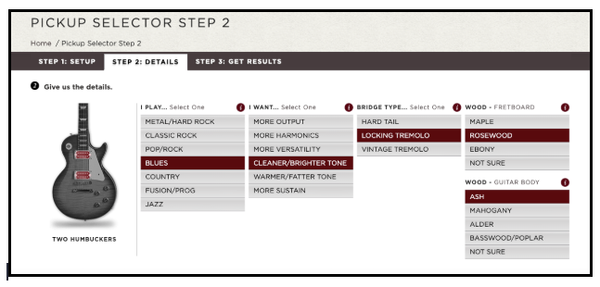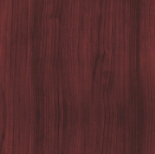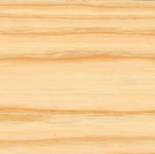on orders over $45*
on orders over $45*
Tonewoods are timbers selected for their acoustic and tonal properties, used in the construction of stringed instruments, including guitars.
They are almost always a hardwood (derived from deciduous trees), as guitars must be able to absorb the tension imparted from the guitar strings on the body and neck, retaining tuning stability and structural integrity, especially with regard to the neck.
Some of the most common tonewoods used in electric guitar construction include Alder, Mahogany, Maple and Ash, which are all available as custom ‘body timber’ or ‘neck timber’ options from guitarkitworld.com
If you are new to guitar and have no idea how these different tonewoods influence guitar tone and playability you may be wondering which tonewood you should choose to best suit your musical tastes.
In the following article we are going to take a closer look at Mahogany, Maple, Alder and Ash, and explain how they can influence tone and playability. So, if you are unsure which tonewood you should choose when considering a new DIY guitar kit, this article is for you.
Do tonewoods actually make a discernible difference to guitar tone?
There’s no question, the choice of tonewoods used in acoustic guitar construction plays a major role with regard to tone, but when it comes to electric guitars, it becomes far less clear.
As a result, there has been an ongoing debate amongst guitarists and guitar makers over the influence of tonewoods on tone for many years, and the debate continues.
One of the most common arguments (of those who believe tonewoods do not influence tone) is the fact that the electronics, including pickups and amplification, simply overpower any influence the tonewoods used to build the guitar would otherwise have.
Recommended: Pickups for DIY guitar kits
While on the first impression that appears a logical argument, as we know, electric guitars vary considerably in regard to electronics from model to model, and the settings on your amplifier also play a major role.
So while the tone on a guitar such as the JS 7 string, played through a heavily overdriven Marshall® stack might be heavily influenced by the electronics, with the tonewoods used making no noticeable difference in tone. The same cannot be said for some of our hollow body kits which, being a hollow-bodied instrument produce internal resonance and being predominantly jazz guitars are often played with a clean tone, without excessive gain.
Electric guitar pickups are essentially magnets that create magnetic fields.
When a steel string is vibrated over the magnetic field, a disturbance is detected which is transferred to the amplifier, resulting in projected sound.
The frequency and characteristics of the strings' vibrations are almost certainly influenced by the properties of the timber used to construct the body and neck.
Highly dense timber such as maple, for instance, is less absorbent, meaning soundwaves are reflected quickly, resulting in a faster response from the guitar strings and producing a brighter tone.
A softer hardwood such as Mahogany, however, is more absorbent, meaning the properties of the wood itself play a much bigger role, produced a warmer sound due to the lower density of the timber, all things being equal.
It’s no coincidence that Gibson® guitars which predominantly use Mahogany sound warmer and fuller than Fender® guitars which are mostly constructed from Alder and produce a brighter, glassier tone. Although it must be said, the tonewood used is not the only component responsible for the guitar’s tone.
If this sounds a little strange to you...check the Seymour Duncan® website, in particular, the pickup selector tool.

It also looks to match the right pickup with the correct choice of timber for best results, based on the musical genre.
And for those unaware, Seymour Duncan® is one of the most respected aftermarket pickup manufacturers in the world and happens to know a thing or two about guitar tone!
It’s also true that playability and ‘feel’ affects tone. This is mostly attributed to the wood used to construct the neck and fretboard.
Rosewood, for instance, is considered an ’oily’ timber that reduces friction between the fingers and fretboard and is preferable to some guitarists.
Experienced guitarists, will agree that Rosewood ‘feels’ considerably different to a sealed maple fretboard, with neither being considered superior, and the choice often coming back to personal taste.
One of the most common questions asked about the influence of tonewoods is which wood is best suited to a particular style of music e.g. which tonewood should I choose if I want to play hard rock, blues or jazz for example.
The truth is, you will find a number of different tonewoods used across musical genres.
Recommended: Guitar Kits for Musical Genres
Blues is a good example of this. Both the Fender Stratocaster®, and Gibson Les Paul® are considered authentic, ‘bluesy guitars’. But they are very different guitars if taking into account the tonewoods used along with pickup configuration.
It makes more sense to consider how a particular tonewood can influence the sound of the guitar, taking into account all components in a more holistic way.
For example, If you prefer the tone of Mark Knopfler of Dire Straits, for instance, you may prefer Alder, being a brighter sounding tonewood which tends to really cut through a mix. But, you may also need to consider single-coil pickups, a lighter body style and of course your technique, which in the case of Mark Knopfler arguably plays a larger role than anything else.
So, while it is difficult to associate particular tonewoods with musical genres, learning more about the characteristics of specific tonewoods will allow you to make an informed decision based on your own musical tastes and how you might approach a particular genre e.g. you might prefer Stevie Ray Vaughan’s tone to Gary Moore’s as a blues player, or you may be more interested in a guitar and tonewood choice that covers a lot of musical bases effectively.
In the following section, we’ll take a closer look at the timber options available at guitarkitworld.com and explain how these can influence the tone of your guitar, all other aspects being equal.
 Mahogany is typically considered a warm sounding timber and is most commonly associated with Gibson® guitars. Many guitarists consider this a fuller-sounding tonewood than its counterparts.
Mahogany is typically considered a warm sounding timber and is most commonly associated with Gibson® guitars. Many guitarists consider this a fuller-sounding tonewood than its counterparts.
You may have noticed how full, or ‘fat’ sounding a Les Paul® seems in comparison to a Fender Stratocaster®, along with added sustain even on very high notes.
While Mahogany is an essential piece of the puzzle, A Les Paul’s® tone cannot be completely attributed to the timber the guitar is constructed from. For instance, Gibson® guitars are considerably heavier than the typical Fender Stratocaster® and also utilizes a set neck which is considered to increase sustain while Fender® typically uses bolt-on necks.
Speaking of Les Paul's® you will often find LP guitars and guitar kits loosely based on the Les Paul® often come with a flamed maple veneer or thicker maple cap.
This is not only for aesthetic purposes, the maple cap used on Gibson Les Pauls® is a denser timber than Mahogany. It not only looks great, but it will also add definition to the fuller, fatter Mahogany influenced tone, giving the guitar the best of both worlds.
Maple is an extremely dense hardwood known for its high tensile strength. Because of this, it is an ideal wood to manufacture guitar necks from, as is it able to handle the tension applied from the steel guitar strings, while maintaining structural integrity e.g. it is less likely to inward bow causing issues with tuning and playability.
Being a very dense timber, it tends to sound very bright and is considered highly responsive, as dense timbers tend to reflect soundwaves quickly as the density of the timber prevents the soundwave from being absorbed by the timber.
Used in our necks primarily. Maple is very bright sounding and potentially a little louder than most other tonewoods.
 Swamp Ash is a lighter, denser timber than Mahogany and credited with being a bright sounding tonewood.
Swamp Ash is a lighter, denser timber than Mahogany and credited with being a bright sounding tonewood.
All things being equal, Ash will emphasize the bottom end and upper frequencies, sacrificing some clarity in the midrange.
This is ideal for singer-songwriters whose voice often utilizes more of that mid-range space, meaning the voice and the guitar are working harmoniously rather than fighting for space.
It should be noted, however, that Ash, has more natural variation than most timbers and can look and sound a little different from one guitar to the next.
Timber, being an organic product means this is often the case and explains why you may notice slight tonal variety even between guitars of the same make and model.
Alder is a light, highly dense timber associated with Fender® guitars since the late ’50s and early ’60s. It is the tonewood used on the iconic Fender Stratocaster® and Telecaster®.
It is credited with a more even tonal distribution than Ash, particularly in the mid and lower ranges, and due to its high density is a responsive, bright sounding tonewood.
Aesthetically, Alder isn’t as interesting as Mahogany or Ashwood and explains why Fender® produces more solid color finished guitars than Gibson® which produces a high number of natural or transparent sunburst finishes which accentuate the timbers natural grain patterns.
Woodgrain is also a factor when it comes to selecting the type of timber used to construct your guitar kit especially if you are staining your guitar. That's why maple is often used as a cap on guitars due to its attractive tiger striping.
It not only looks great but will add definition to the overall tone of the guitar.
Timber such as Basswood while being completely acceptable in many guitars isn't quite as interesting as Mahogany or maple, for example, and can appear fairly generic.
Other commonly used timbers such as Mahogany are less tightly grained which makes for a more visually interesting guitar but will require grain filling prior to finishing to allow for an even surface.
While the debate about tonewoods is likely to continue for some time, the fact is the timber you choose to build your guitar from does play a role in tone and playability.
And while it is difficult to pinpoint the best species of wood-based on the musical genre, understanding the influence tonewoods have on tone, taking all components of the guitar into account can help you make a more informed decision about the characteristics of the guitar you eventually own.
The real argument should be about the degree of influence tonewoods play on tone, and considering the nature of timber, I suspect the debate to continue for some time.